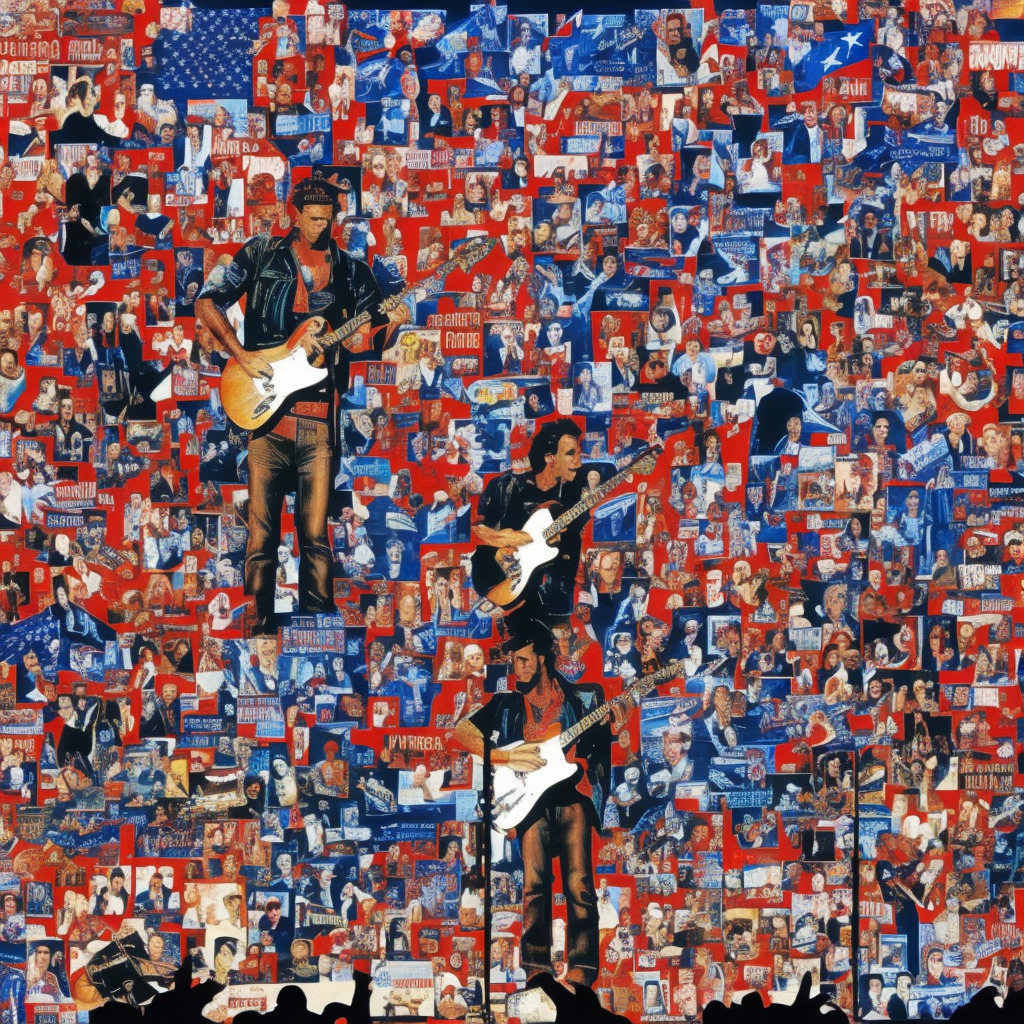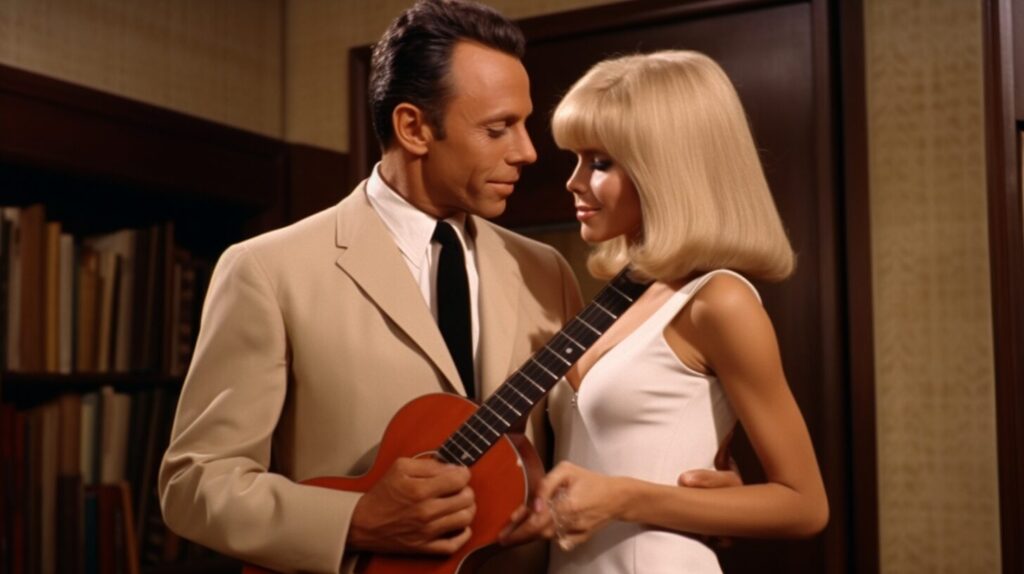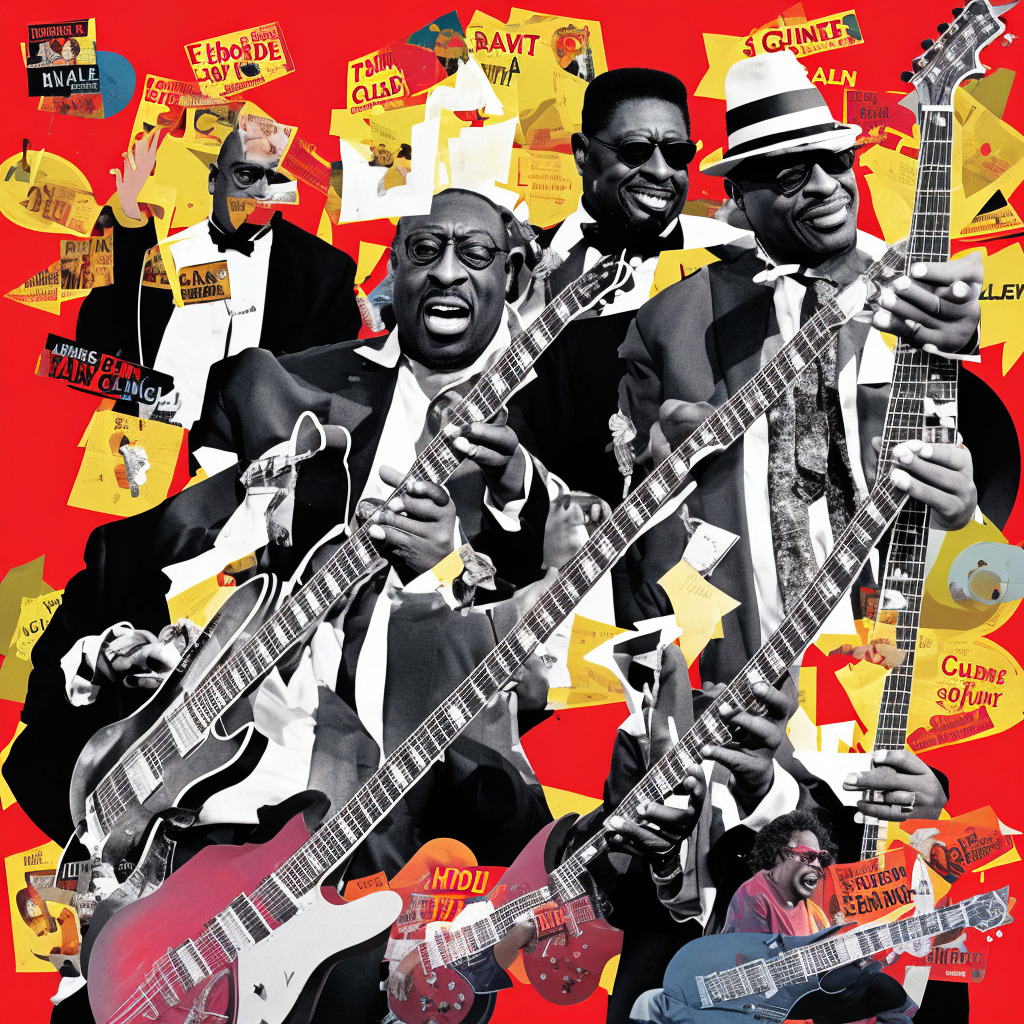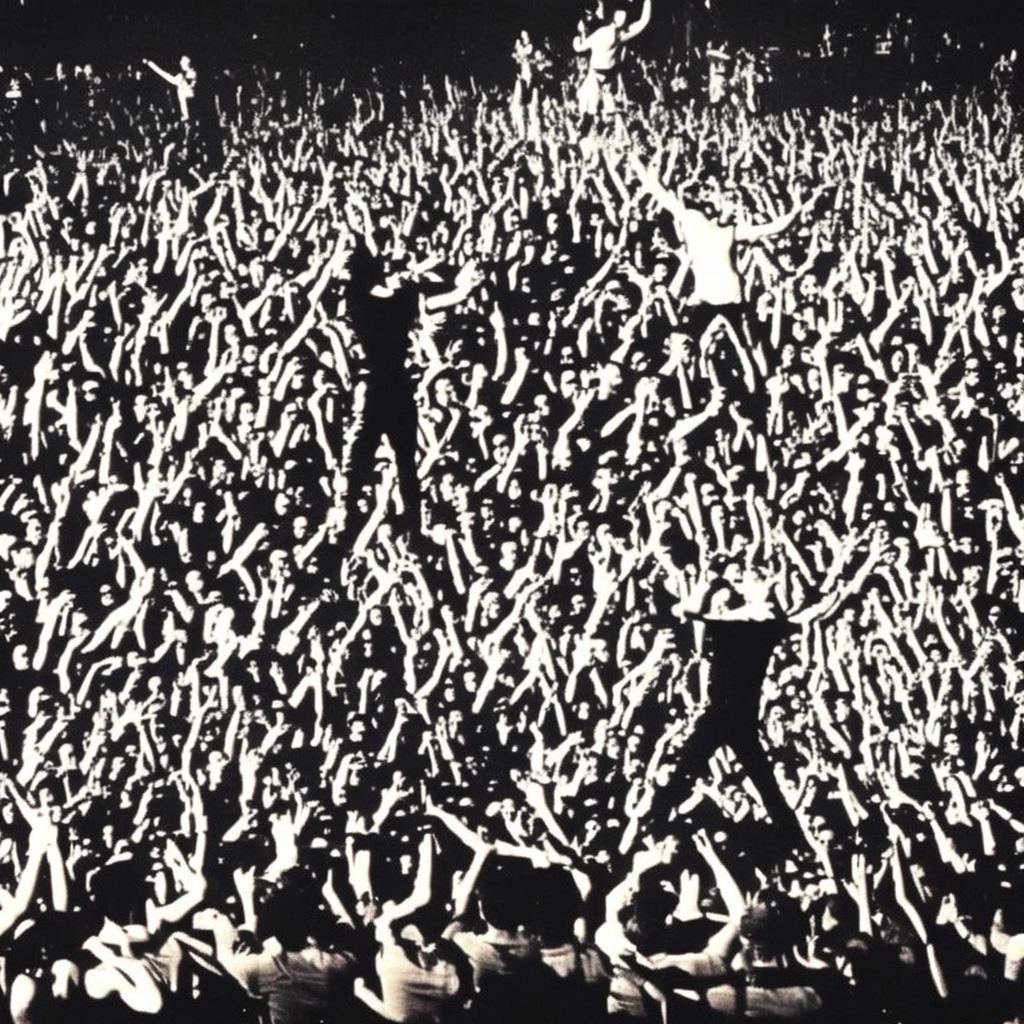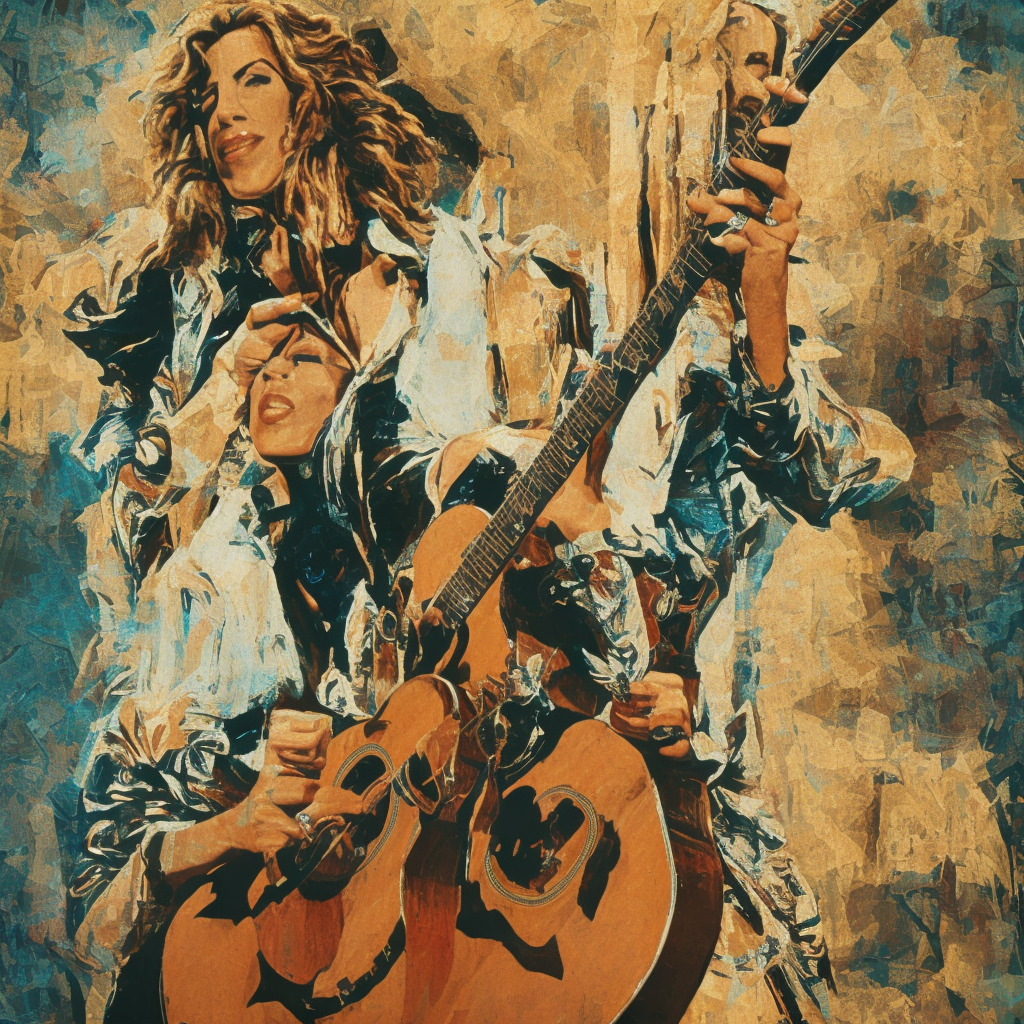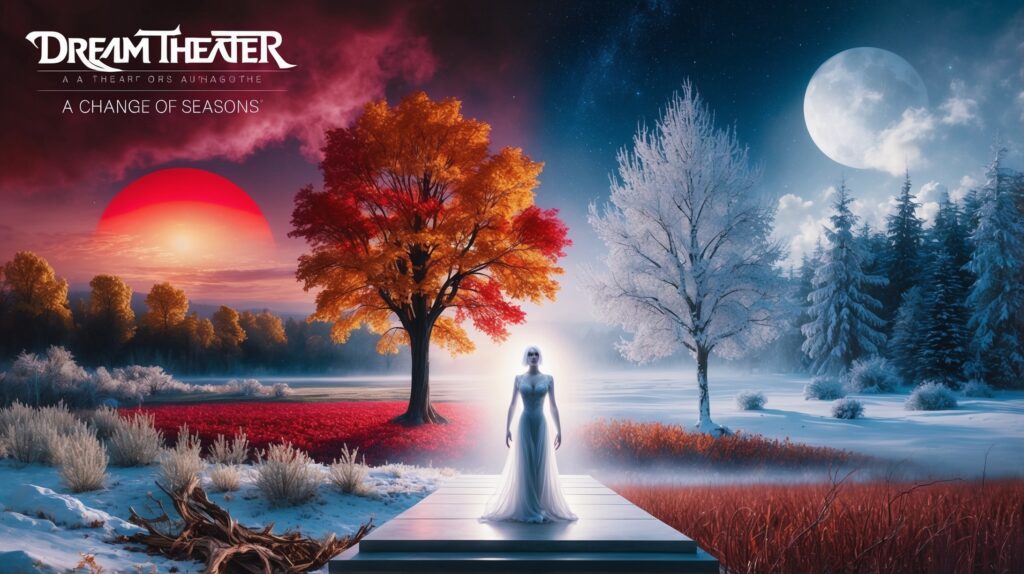Decoding the Iconic “Born in the U.S.A.”
Bruce Springsteen, affectionately known as “The Boss,” has been a staple in the American music scene since the 1970s. With his distinctive voice and storytelling prowess, Springsteen’s songs are woven into the fabric of American culture. Perhaps no song better encapsulates his unique style and influence than “Born in the U.S.A.,” the title track of his 1984 album. Despite its seemingly patriotic chorus, the song provides a scathing critique of the treatment of Vietnam War veterans and the harsh realities of working-class life in America.
Born in 1949 in Long Branch, New Jersey, Springsteen was inspired to pick up a guitar after witnessing Elvis Presley’s performance on The Ed Sullivan Show. He went on to form multiple bands before finally achieving success as a solo artist. His backing band, the E Street Band, has included notable musicians such as Steven Van Zandt, Clarence Clemons, and Max Weinberg, who have all significantly contributed to Springsteen’s sound over the years.
Though Springsteen has seen immense commercial success, it hasn’t come without its share of controversy. “Born in the U.S.A.” has often been misunderstood and misappropriated by politicians and public figures who only focus on the song’s catchy chorus. While the song’s anthemic melody may evoke a sense of patriotism, a closer examination of the lyrics reveals a darker and more complex narrative.
Despite these controversies, Springsteen and the E Street Band have garnered numerous awards and accolades over the years. Springsteen has received 20 Grammy Awards, two Golden Globes, and an Academy Award for his music. In 1999, he and the E Street Band were inducted into the Rock and Roll Hall of Fame, solidifying their status as icons in the music industry.
Though “Born in the U.S.A.” is often misinterpreted, its true meaning and impact on American culture cannot be understated. As an experienced music blogger, I encourage listeners to delve deeper into Springsteen’s discography and explore the stories he tells through his music. This understanding will not only enrich one’s appreciation for “The Boss” but also provide a window into the complexities of the American experience.
Visualizing the American Struggle: “Born in the U.S.A.” Music Video
The music video for Bruce Springsteen’s iconic anthem, “Born in the U.S.A.,” is just as unforgettable and powerful as the song itself. Directed by John Sayles, who is known for his impactful films such as “Matewan” and “Lone Star,” the video effectively captures the spirit of the song, relaying the story of an American working-class hero.
Taking an artistic approach that is raw and gritty, the music video primarily features black and white footage of Bruce Springsteen’s live performances. The energy and intensity of these performances are palpable, perfectly complementing the song’s lyrics and theme. Meanwhile, the video is interspersed with color footage of Springsteen and the E Street Band performing the song in a studio setting. This unique blend of colors and footage styles not only highlights the song’s message but also showcases the band’s undeniable chemistry and talent.
The production details of the “Born in the U.S.A.” music video are not widely known, but its budget is presumed to be modest by today’s standards. This is not surprising considering the video’s simplistic approach and the fact that it was produced in 1984. Nevertheless, the video’s impact and enduring relevance are undeniable, with fans continuing to discuss and appreciate it more than three decades after its release.
Although the official music video is the most well-known visual representation of “Born in the U.S.A.,” there are plenty of fan-made tributes and videos available on platforms like YouTube. These fan creations range from heartfelt montages of soldiers returning home to compilations of patriotic imagery, all set to the song’s powerful tune. Such tributes showcase the impact and legacy of “Born in the U.S.A.” beyond just its music video.
The “Born in the U.S.A.” music video accomplishes the difficult task of translating the song’s complex themes of patriotism, disillusionment, and struggle into a visual format. Today, it stands as a testament to the power of music and its ability to capture the essence of a moment in time, harnessing the spirit of an entire generation.
Dissecting the Lyrics: Born in the U.S.A.
The first kick I took was when I hit the ground
You end up like a dog that’s been beat too much
Till you spend half your life just covering up
Born in the U.S.A., I was born in the U.S.A.
I was born in the U.S.A., born in the U.S.A.
Got in a little hometown jam
So they put a rifle in my hand
Sent me off to a foreign land
To go and kill the yellow man
Born in the U.S.A., I was born in the U.S.A.
I was born in the U.S.A., born in the U.S.A.
Come back home to the refinery
Hiring man says “son if it was up to me”
Went down to see my V.A. man
He said “son, don’t you understand”
I had a brother at Khe Sanh
Fighting off the Viet Cong
They’re still there, he’s all gone
He had a woman he loved in Saigon
I got a picture of him in her arms now
Down in the shadow of the penitentiary
Out by the gas fires of the refinery
I’m ten years burning down the road
Nowhere to run ain’t got nowhere to go
Born in the U.S.A., I was born in the U.S.A.
I was born in the U.S.A., born in the U.S.A.
“Born in the U.S.A.” is often thought of as a patriotic anthem due to its catchy chorus, but a deeper dive into the lyrics reveals a more complex and critical message about the American Dream and the struggles faced by the working class. Released in 1984 as the title track of the album with the same name, the song portrays a Vietnam War veteran’s disheartening return to a country that seemingly abandoned him.
The protagonist of the story describes his upbringing in a “dead man’s town” where he learned the harsh realities of life from a young age. He is then drafted into the Vietnam War, a controversial and polarizing conflict that took place from 1955 to 1975, as the lyrics refer to “a little hometown jam” – a nod to the draft lottery system – and being sent “off to a foreign land / To go and kill the yellow man.”
When the veteran returns home, he finds himself alienated and unable to secure a job, as the hiring manager sympathetically tells him, “Son, if it was up to me.” The mention of the Veterans Affairs (V.A.) representative highlights the lack of support and understanding for the soldiers who risked their lives in the war. The protagonist also mourns the loss of a brother in the war and the lingering presence of the Viet Cong, while a woman he loved in Saigon is only a memory captured in a photograph.
The bleak imagery of “the shadow of the penitentiary” and “the gas fires of the refinery” evokes the oppressive atmosphere surrounding the working class, with the protagonist lamenting his lack of options as he fruitlessly searches for a better life.
By addressing the disillusionment and hardships faced by both war veterans and the American working class, “Born in the U.S.A.” serves as a powerful critique of the nation’s treatment of its citizens during the era. The song’s continued resonance speaks to its timeless exploration of the human struggle and the unfulfilled promise of the American Dream.
Awards, Accolades, and Cultural Impact
“Born in the U.S.A.” has enjoyed immense success since its release, both critically and commercially. The song peaked at number nine on the Billboard Hot 100 chart and was also ranked number six on the 1985 year-end chart. Bruce Springsteen’s iconic anthem has received several accolades for its powerful message, unforgettable melody, and distinctive production. It was nominated for the prestigious Grammy Award for Best Rock Vocal Performance, Male in the 1985 ceremony.
The song’s influence stretches far beyond the music charts, leaving a lasting impact on film, television, and video games. In the 1986 film “Ruthless People,” the track can be heard playing in the background during a memorable scene. The anthem has also been featured in various television shows like “The Sopranos,” “Miami Vice,” and “Parks and Recreation.” Video game enthusiasts may recognize “Born in the U.S.A.” from the soundtrack of the popular 2002 game “Grand Theft Auto: Vice City.”
Throughout the years, numerous artists have paid tribute to Springsteen’s “Born in the U.S.A.” with their own unique cover versions. Some noteworthy renditions include a haunting take on the song by folk singer-songwriter Ani DiFranco, a stripped-down acoustic version by country star Eric Church, and an emotional performance by Ben Harper during the 2009 Kennedy Center Honors ceremony honoring Bruce Springsteen.
Despite its countless accolades and widespread recognition, the song has not been without controversy. Some critics have accused the track of promoting blind patriotism, while others argue it speaks to the struggle of the working class and those who have served in the military. Regardless of one’s interpretation, it’s impossible to deny the song’s enduring impact on the American cultural landscape.
Charting the Success of “Born in the U.S.A.”
Upon its release on June 4th, 1984, “Born in the U.S.A.” instantly caught the attention of audiences and music critics alike. The title track from Bruce Springsteen’s seventh studio album proved to be a commercial triumph as it climbed the charts worldwide.
In the United States, “Born in the U.S.A.” made its debut on the Billboard Hot 100 at #62 on October 6th, 1984. It continued to gain momentum, eventually peaking at an impressive #9 on December 15th, 1984. In total, the song spent a solid 22 weeks on the chart, demonstrating its undeniable staying power.
In the United Kingdom, the song entered the Official Singles Chart on June 16th, 1984, at #32. It steadily rose through the ranks over the course of the following months, ultimately reaching a peak position of #5 on August 4th, 1984. This marked Springsteen’s first-ever Top 5 single in the UK, laying the foundation for his future chart successes across the pond.
“Born in the U.S.A.” also made its mark on international charts, securing Top 10 positions in countries such as Sweden, Canada, Norway, and New Zealand. This global recognition further solidified the song’s status as a rock anthem for the ages.
An interesting chart trivia fact surrounding “Born in the U.S.A.” is that, although Springsteen never reached the #1 spot on the Billboard Hot 100 with this song, the album as a whole produced an outstanding seven Top 10 singles. This incredible accomplishment ties Springsteen’s “Born in the U.S.A.” album with Michael Jackson’s “Thriller” and Janet Jackson’s “Rhythm Nation 1814” for the most Top 10 hits from a single album.
In summary, “Born in the U.S.A.” proved to be a triumphant success in terms of chart performance, both in the United States and internationally. Its commercial achievements, combined with its enduring cultural impact, have assured the song’s lasting legacy as one of Springsteen’s most iconic tracks.
Diving into the Musical Anatomy of “Born in the U.S.A.”
When examining the musical structure of Bruce Springsteen’s iconic song, “Born in the U.S.A.”, it’s essential to start with the key it was written in. The song is primarily composed in the key of B Major, which is known for its bright and uplifting tonality. This key choice complements the anthemic and powerful nature of the song, creating a strong emotional resonance with listeners.
The chord progression in “Born in the U.S.A.” is rather straightforward, following a classic I-IV-V pattern. Specifically, the chords revolve around B (I), E (IV), and F# (V). This simple progression provides a solid foundation for the song’s melody and allows Springsteen’s storytelling lyrics to shine. Additionally, the repetitive nature of the chord progression contributes to the song’s infectious and memorable quality.
Another notable feature of “Born in the U.S.A.” is its tempo, which sits at a steady 120 beats per minute (BPM). This moderate tempo gives the song a driving and energetic feel, making it a perfect anthem for live performances and large-scale events. The drum track, in particular, plays a crucial role in establishing the song’s pulse, with a prominent snare drum beat accentuating the backbeat and propelling the music forward.
The song’s arrangement and instrumentation also merit discussion. “Born in the U.S.A.” features a powerful combination of electric guitars, synthesizers, and saxophone, which serve to create a full and rich sonic palette. The synthesizers, played by Roy Bittan, add an unmistakable ’80s flavor to the track, while the saxophone, performed by the late Clarence Clemons, brings a touch of soul and warmth to the song.
In terms of song structure, “Born in the U.S.A.” follows a traditional verse-chorus-verse-chorus-bridge-chorus format. This structure allows the catchy chorus to take center stage and become deeply ingrained in the listener’s memory. The bridge section, which features a poignant saxophone solo by Clemons, serves as a brief departure from the driving energy of the rest of the song and adds a moment of reflection before the final chorus.
By dissecting the various musical components of “Born in the U.S.A.”, it becomes clear that the song’s impact and enduring popularity can be attributed not only to its thought-provoking lyrics but also to its expertly crafted musical structure. The combination of a bright key, simple chord progression, moderate tempo, and powerful instrumentation makes this song a timeless classic that continues to resonate with audiences today.
The Genius Behind “Born in the U.S.A.”
Bruce Springsteen, famously known as “The Boss,” has been the driving force behind countless anthems that have defined the American rock music landscape. In addition to “Born in the U.S.A.,” Springsteen has composed such notable tracks as “Dancing in the Dark,” “Glory Days,” “Thunder Road,” and “The River.” His incredible storytelling abilities and penchant for capturing the essence of Americana have garnered him various accolades, including 20 Grammy Awards and an induction into the Rock and Roll Hall of Fame. The Boss’ legacy continues to thrive as a symbol of resilience and the ever-evolving American Dream.
🎸Did you know? “Born in the U.S.A.” was inspired by a Vietnam war vet’s letter to #BruceSpringsteen! 🇺🇸 A timeless anthem with a poignant origin. Let’s rock, America! 🤘#FunFact #MusicTrivia #SpringsteenClassic
Click to Tweet

